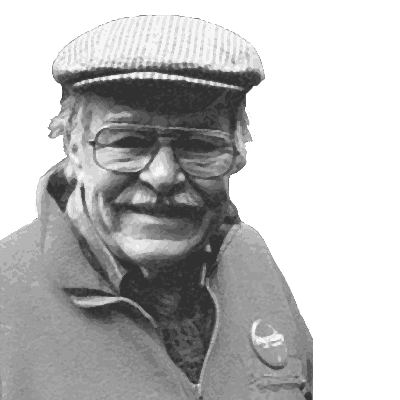Dave Hopkins

David Hopkins didn’t get along with his high school typing teacher and ended up with a D in the class. But he also ended up with a book that the teacher kept in her room for a different course — physiography, the study of how landscapes came to be.
Hopkins never took the physiography course, but the book helped start a career that eventually made him the foremost authority on Beringia, the area surrounding and including the ancient land bridge between Asia and Alaska.
Along the way, and by necessity, the geologist became a renowned multidisciplinary scientist.
“David Hopkins would draw on natural history, oral history, archeology and geology to piece together the story of the greatest ancient thoroughfare of all: the Bering Land Bridge,” wrote author Dan O’Neill in his 2004 biography, “The Last Giant of Beringia.”
Born in 1921, Hopkins grew up in New Hampshire. After earning a geology degree there, he joined the U.S. Geological Survey and began working in Alaska. He eventually earned master’s and doctorate degrees from Harvard University.
His geology work first brought him to the Seward Peninsula, on the Alaska side of the Bering Land Bridge, in 1947. From that time until his death, he strove to understand the region and its history. He worked extensively with Russian colleagues during the height of the Cold War in the 1960s and ’70s.
In 1974, Hopkins discovered that 18,000-year-old plants had been buried under ash from the now-dormant volcanoes that created the peninsula’s Devil Mountain Lakes. The plants — mostly grasses, sedges and herbs — were those that inhabited the landscape during the most recent emergence of the land bridge. They confirmed that the environment at that time was suited to herds of grazing animals such as mammoths.
Hopkins retired from the USGS in 1985 and joined the faculty at UAF as a distinguished professor of Quaternary studies.
At UAF, “he initiated interdisciplinary field trips that brought together geologists, biologists, anthropologists and soil scientists,” wrote colleagues Thomas Hamilton and Julie Brigham-Grette in a 2003 remembrance. “Similarly diverse groups assembled for the seminars that he and his wife, Rachael, hosted in their home.”
The title of O’Neill’s biography came from a eulogy by Andrei Sher, a friend of Hopkins. Sher observed that Beringia was a place of giants – the mammoths.
“Those big woollies – they wandered from one world to another, transferring and spreading their skills, knowledge and personal experience to the rest of the world as a genetic contribution to the Evolution of Life. Most of them died out about 10,000 years ago,” Sher said.
“The last giant of Beringia, David Hopkins, died on Friday, Nov. 2, 2001.”
More online about Dave Hopkins:
